A Hydraulic,
Environmental and Ecological Assessment of a Sub-tropical Stream in
Eastern Australia: Eprapah Creek, Victoria Point QLD
by Hubert CHANSON (h.chanson@uq.edu.au)
M.E., ENSHM Grenoble, INSTN, PhD (Cant.), DEng (Qld),
Eur.Ing., MIEAust., MIAHR, 13th
Arthur Ippen awardee
Dept. of Civil Engrg., Univ. of Queensland, Brisbane QLD
4072, Australia
 Presentation
Presentation
Eprapah Creek is a small sub-tropical stream in Eastern Australia. Located
in the Redlands shire close to Brisbane QLD, the stream flows from Mount
Cotton to Thornlands, where it enters Moreton Bay. The catchment is mostly
urban in the lower reaches and semi rural/rural residential in the upper
reaches. The creek also flows through several conservation areas hosting
endangered species. The stream is basically 15 km long with about 3.8 km of
micro-tidal estuarine zone. The Victoria Point sewage treatment plant
discharges into the estuarine reach approximately 2.6 km from its mouth. On
Friday 4th April 2003, a series of detailed hydraulic, environmental and
ecological measurements were conducted in Eprapah Creek (Victoria Point
QLD). The purpose of the field works was to assess the complexity of a small
estuarine system, the interactions between hydraulic engineering, biology
and ecology, and also an overall assessment of the estuarine system that was
heavily polluted four to five years ago (1).
Field works were conducted from a low tide to the next low tide : i.e.,
between 6:00am and 6:00pm on Friday 4th April 2003. Observations were
conducted in the estuarine zone at 4 sites along a 4 km stretch located
between AMTD 0.6 and 3.8 km : i.e., from the river mouth up to Cleveland to
Redland Bay Rd. They included water level, surface velocity, temperature,
conductivity, pH, turbidity, DOC, fish habitat and behaviour, and bird and
wildlife surveys. Some measurements were taken every 15 minutes, others
every 30 minutes while wildlife and bird observations were conducted
continuously. The latter included sightings of koalas, wallabies, sea
eagles, mud crabs ... This series of 12 hour measurements was complemented
by several vertical profiles of water quality indicators using a probe
YSI6920 at three sites. These were performed at high tide and at mid ebb
flow. In addition, an ADV point velocity meter and a water quality meter
YSI6600 were deployed side by side at one site. The probes were continuously
data logged for 3 hours from 45 minutes before high tide to 2.5 hours
after. The results provide an
unique and detailed snapshot of a subtropical creek system (CHANSON
2003). This single-day study included a broad range of simultaneous
investigations : hydraulics and hydrodynamics, water quality, and ecology
(bird and fish observations predominantly). It is believed that this is the
first survey of its kind at Eprapah Creek and possibly in a sub-tropical
estuarine system in Australia. The original approach of the problem sets new
standards for comprehensive surveys of small estuarine systems in
sub-tropical zones. The study included further the first comprehensive
hydrodynamic survey of Eprapah Creek. A basic understanding of the estuary
hydraulics is indeed essential to assess the flushing processes in the
estuarine system, the interactions between turbulence and contaminant
transport, and basic mixing and dispersion processes.
Basic results of the 4 April 2003 field work
On 4 April 2003, more than 400 fish were caught, corresponding to 21
species. The largest numbers of fish were caught between 10:00 and 17:00. It
is likely that the combination of flood flow with higher dissolved oxygen
contents and sun light induced significant fish activities evidenced
by the number of fish captures. Almost 500 birds were sighted : that is,
more than 72 bird species. Bird sightings showed a strong activity at all
sites between 7:00 and 10:00. A second period of activity was between 15:00
and 18:00. The data showed also that the greatest number of species
was seen between 7:00 and 10:00, with the maximum number of species detected
between 8:00 and 9:00. Yet there was always a minimum of five bird species
seen every hour of the day suggesting a fair diversity of the bird
population in the Eprapah Creek estuarine zone. Indeed the new findings
might indicate that the bird community was possibly more diversified than
during a fauna survey undertaken in 1994 and 1995 in the same sections of
the creek. More than 100 observations of wildlife (e.g. mammals, skink,
insects) were done corresponding to more than 20 species. Three species of
marsupials and two types of reptiles were seen. Overall most wildlife
activity was observed during daylight.

Water quality measurements showed that dissolved oxygen contents were
highest around high tide and middday, while the downstream waters were more
oxygenated than the waters at the upstream sites. The trend was consistent
with previous surveys showing oxygen depleted freshwater runoff while waters
rich in oxygen were usually brought by the flood tide. Turbidity data showed
consistently a greater water clarity at high tide and at the beginning of
the ebb flow. Conductivity data followed the tidal cycle with an influx of
saltwater during the flood flow and their reflux during the ebb at three
sites. The pH data suggested a slight decrease in pH with increasing
distance from the river mouth. Vertical profiles of water quality parameters
were conducted at four sites. Vertical distributions of water temperature,
dissolved oxygen content, turbidity and pH were reasonably uniform at high
tide and in the early ebb flow. But all conductivity data showed some
stratification with a fresh water lens of about 0.4 to 0.6 m thickness.
Depth-averaged water quality parameters, calculated from each vertical
profile, indicated that a decrease in average water temperature, dissolved
oxygen content, conductivity and pH at both high tide and early ebb flow was
observed with increasing distance from the river mouth (AMTD) (2).
Depth-averaged turbidity data showed an increase in averaged turbidity with
increasing AMTD at high tide, but the data during early ebb were mixed.
Interestingly identical trends were observed with both surface water data
and depth-averaged data.
 Continuous recordings of water quality parameters,
at 0.5 m beneath the free-surface at one site (AMTD 2.1 km), highlighted
large short term fluctuations with characteristic time scales ranging from
few minutes to half-hour. While some fluctuations were caused by the passage
of boats, others resulted from flow turbulence, possibly from large-scale
turbulent structures. These fluctuations of water quality parameters
demonstrated that the estuarine waters were not uniformly mixed.
Continuous recordings of water quality parameters,
at 0.5 m beneath the free-surface at one site (AMTD 2.1 km), highlighted
large short term fluctuations with characteristic time scales ranging from
few minutes to half-hour. While some fluctuations were caused by the passage
of boats, others resulted from flow turbulence, possibly from large-scale
turbulent structures. These fluctuations of water quality parameters
demonstrated that the estuarine waters were not uniformly mixed.
Further results and the detailed surveys may be found in CHANSON
(2003).
Summary
Despite some encouraging findings in terms of bird and fish populations, and
in terms of hydrodynamic flushing process, poor dissolved oxygen and
pH levels at the upstream sites, associated with surface slick
observations at one site, suggested some pollution of the eco-system. Low DO
and pH levels might result from water runoff in the catchment and problems
associated with the presence of industrial poultry farms, land clearance,
residential and industrial developments. The large number of exotic fish at
the estuary upper reach was another concern for the local environment, while
the declining koala population is a major concern. A threat was possibly the
current population growth in the area, which could see an increase in the
level of effluent pumped into the creek by a nearby treatment plant and
associated with land development for residential and commercial purposes.
Further research is underway in Epraph Creek and new detailed field
investigations were undertaken in 2003, 2004, 2005, 2006, 2007, 2010, 2012,
2013 and 2014 (FERRIS et al. 2004, CHANSON et al. 2004, TREVETHAN et al.
2006,2007,2008, CHANSON 2008). A striking feature of the present data sets
was the large and rapid fluctuations in all turbulence characteristics and
of the suspended sediment fluxes during the tidal cycles (CHANSON
and TREVETHAN 2010). This was rarely documented, but an important
characteristic of the newer data sets is the continuous high frequency
sampling over relatively long periods. The findings showed that the
turbulent properties, and integral time and length scales should not be
assumed constant in a shallow estuary. The integral time scales for
turbulence and suspended sediment concentration were similar during flood
tides, but differed significantly during ebb tides. More recently, an
overview of the broad characteristics of the estuaries of South-East
Queensland (Australia) was developed, where the small peri-urban estuaries
like Eprapah Creek might provide an useful indicator of potential changes
which might occur in larger systems with growing urbanisation (CHANSON
et al. 2014).
Footnotes
(1) Company executives were
jailed in 2001 in application of the EPAct 1994.
(2) AMTD = Adopted Middle Thread Distance measured upstream from the mouth.

Detailed photographs
Photo No. 1 : Eprapah Creek on 11 Dec.
2002 around AMTD 2.5 km (estuarine zone) looking upstream.
Photo No. 2 : Eprapah Creek on 11
Dec. 2002 around AMTD 3.0 km (near upstream end of estuarine zone) looking
upstream.
Photo No. 3 : Eprapah Creek, downstream
of the marinas, Point Halloran Conservation area on 20 Jan. 2003 around
2:30pm at low tide.
Photo No. 4 : Eprapah Creek, Redlands
QLD on 18 Mar. 2003 around 3:00pm (near low tide).
Photo No. 5 : Koala in Point Halloran
conservation park on 20 Jan. 2003.
Photo No. 6 : Sea eagle above Eprapah
Creek on 18 Mar. 2003.
Field works on Friday 4 April 2003
Photo No. 11 : Group 1 on Fri 4 Apr 2003
around 7:30am. Photo No. 12 : Group 1
on Fri 4 Apr 2003 around 12:00noon.
Photo No. 13 : Group 2 on Fri 4 Apr 2003
around 8:30am. Photo No. 14 : Group 2
on Fri 4 Apr 2003 around 2:30pm.
Photo No. 15 : ADV velocimeter and YSI
probe mounted 50 cm beneath the free-surface on Fri 4 Apr 2003 around
10:00am.
Photo No. 16 : Group 3 on Fri 4 April
2003 around 11:00am. Photo No. 17 :
Group 3 on Fri 4 Apr 2003.
Photo No. 18 : Group 4 on Fri 4 April
2003 at 7:02am. Photo No. 19 : Group 4
on Fri 4 Apr 2003 around 10:30am.
Photo No. 20 : Qld EPA boat conducting a
vertical profile at Site 3 on Fri 4 Apr 2003 around 11:00am.
Photo No. 21 : Koala next to Site 1 on
Fri 4 Apr 2003 around 5:00pm.
Photo No. 50 : Students and EPA boat at
Site 2 around the middle of the day (Courtesy of CIVL4140 Student Group 2).
Photo No. 51 : water quality observations
at Site 2 (Courtesy of CIVL4140 Student Group 2). Photo
No. 52 : bird watching at Site 2 (Courtesy of CIVL4140 Student Group
2). Photo No. 53 : fish dip netting at
Site 2 (Courtesy of CIVL4140 Student Group 2). Photo
No. 54 : dissolved oxygen testing at Site 2 (Courtesy of CIVL4140
Student Group 2). Photo No. 55 :
measurement preparation on the bank (Courtesy of CIVL4140 Student Group 2).
Photo No. 60 : Students at Site 1
discussing with Waterwatch people (Courtesy of CIVL4140 Student Group 3). Photo No. 61 : surface slick at Site 3
durign the flood flow (Courtesy of CIVL4140 Student Group 3). Photo
No. 62 : Low tide at Site 3, note bank erosion (right bank) (Courtesy
of CIVL4140 Student Group 3). Photo No. 63
: Site 3 students during the afternoon (Courtesy of CIVL4140 Student Group
3).
Photo No. 70 : Upstream snag at Site 4
(Platypus pool) (Courtesy of CIVL4140 Student Group 4). Photo
No. 71 : Group work at Site 4 (Courtesy of CIVL4140 Student Group 4).
Photo No. 72 : student fishing at Site 4
(Courtesy of CIVL4140 Student Group 4). Photo
No. 73 : fishing at Site 4 in front of ECCLA people (Courtesy of
CIVL4140 Student Group 4). Photo No. 74
: students at Site 4 (Courtesy of CIVL4140 Student Group 4).
Field works on Thursday 2 September 2004
Site 1 : Photo
No. 1.1 :Site 1 students around 7:15 am. Photo
No. 1.2 : Site 1 around 12:00 noon at high tide. Photo
No. 1.3 : Site 1 activity around 6:30am.
Site 2 : Photo No. 2.1 : Site 2
students around 7:15 am. Photo
No.
2.2 : Site 2 activties around 11:00 am.
Site 3 : Photo No. 3.1 : Site 3
student activity around 6:45 am. Photo
No.
3.2 : Site around 16:30, with the EPA taking physico-chemical
readings mid-stream. Photo No. 3.3
: students around 13:00.
Wildlife : Photo No. 1 : Female
koala next to Site 1 on 2 September 2004 around 8:40am.
Overseas visitors: Photo No.1
: Professor Shin-ichi AOKI, Toyohashi University of Technology (Japan)
Field study in Eprapah Creek estuarine
zone on Monday 28 August 2006
Site 1 : Photo No. 1.1 : Group 1 at
work around 8:30am. Photo No. 1.2 :
Discussion with EPA officer around 11:45am. Photo
No. 1.3 : Large boat passing upstream in front of Site 1 around
11:50am.
Site 2B : Photo No. 2.1 : Group2 at
work around 7:00am. Photo No. 2.2 :
looking upstream at Group 2 and river bank around 2:00pm. Photo
No. 2.3 : looking from left bank at Group 2 students at low tide
(7:00am).
Site 3 : Photo No. 3.1 : Site 3 looking
downstream with Group 3 at work around 7:40am; note rainstorm runoff
waterfall in background. Photo No. 3.2
: Looking downstream at the EPA boat arriving at Site 3 at 11:00am. Photo
No. 3.3 : Group 3 students working on right bank around 8:00am.
Wildlife : Photo No. 1 : Female koala
and her baby feeding on an eucalyptus tree at Point Halloran Conservation
area around 12:50pm. Photo No. 2 :
Koala sleeping at Point Halloran Conservation area around 12:55pm.
Field study in Eprapah Creek estuarine
zone on Friday 13 August 2010
Site 1 (Group 1): Photo
1.1: Group 1 at low tide at 06:10; Photo
1.2: Water sampling at end of flood tide at 10:30; Photo 1.3: swamp wallaby next to Site 1
at 15:45;
Site 2B (Group 2): Photo
2.1: Group 2 at low tide at 07:00; Photo
2.2: Group 2 at 13:40 (early ebb tide); Photo
2.3: Brahminy kite at Site 2 at 14:10;
Site 3 (Group 3): Photo
3.1: Group 3 at 12:00 (high tide); Photo
3.2: Group 3 at 14:00 (early ebb tide).
Field
study in Eprapah Creek estuarine zone on Monday 3 September 2012
Site 1 (Group 1): Photo
1.1: Group 1 at 06:10; Photo
1.2: Water sampling at end of flood tide; Photo
1.3: NRM staff monitoring the water quality; Photo
1.4: Group 3 at work during ebb tide;
Site 2B (Group 2): Photo
2.1: Group 2 at work; Photo
2.2: Group 2 taking water sample;
Site 3 (Group 3): Photo
3.1: Group 3 work; Photo
3.2: Group 3 taking some water samples at end of flood tide.
Photographs of the field
study in Eprapah Creek estuarine zone on Friday 12 Aeptember 2014
Site 1 (Group 1, AMTD 0.65 km): Photo
1.1: Group 1 at 09:40 on the right bank; Photo
1.2: Site 1 at 17:20 near end of ebb tide, looking downstream; Photo 1.3: Group 3 working on the
right bank; Photo 1.4:
Group 3 taking water saples at 17:40.
Site 2B (Group 2, AMTD 2.1 km): Photo
2.1: Group 2 at work at 08:20, early flood tide; Photo
2.2: Group 2 working on the left bank; Photo
2.3: Group 2 working on the right bank at 16:20.
Site 3 (Group 3, AMTD 3.1 km): Photo
3.1: at 07:30 during early flood tide, viewed from the right bank; Photo 3.2: Site 3 at
11:00, end of flood tide; Photo
3.3: Group 3 working on the right bank at 11:20.
Photographs of the field study in Eprapa
Creek estuarne zone on Friday 18 August 2016
Site 1 (Group 1, AMTD 0.9 km): PhotoNo.
1.1: Group 1 at 06:30 on the right bank; Photo
No. 1.2: water elevation reading at 11:00; Photo
No. 1.3: Site 1 at 15:00.
Site 2B (Group 2, AMTD 2.1 km): Photo
No. 2.1: Group 2 sampling from the left bank at 07:45; Photo No. 2.2: Group 2 at 16:30.
Site 3 (Group 3, AMTD 3.1 km): Photo
No. 3.1: Group 3 at 08:40; Photo
No. 3.2: Site 3 on the right bank at 16:00.
Photographs of the field study at Eprapah Creek on
14 August 2018
Site 1 (Group 1, AMTD 0.9 km): Photo
No. 1.1: Group 1 about 06:15am at Site 1, right bank; Photo No. 1.2: Group 1 about 08:30am
at Site 1; Photo No.
1.3: Group 1 about 08:30am at Site 1; Photo
No. 1.4: Group 1 about 15:300 at Site 1.
Site 2B (group 2, AMTD 2.1 km): Photo
No. 2.1: Group 2 about 07:15am at Site 2B, left bank; Photo No. 2.2: Group 2 about 07:30am
at Site 2B; Photo No.
2.3: Group 2 about 10:15am at Site 2B; Photo
No. 2.4: Group 2 about 16:30am at Site 2B.
Site 3 (AMTD 3.1 m): Photo
No. 3.1: Site 3 about 09:15am, view from the right bank.
Related
links
Resources on Eprapah Creek
Qld EPA water quality monitoring {http://www.epa.qld.gov.au/environmental_management/water/water_quality_monitoring/}
Eprapah Creek Catchment Landcare Association Inc. (ECCLA) {http://eprapah.scouting.net.au/index/projects/landcare.htm}
Waterwatch {http://www.qld.waterwatch.org.au/regions/redland.html}
The Charles S. Snow Scout Environmental training Centre {http://www.scoutsqld.com.au/Links/Activities/Environment-Eprapah.htm}
An assessment of Eprapah Creek health {http://ian.umces.edu/adrian/jones_etal_eprapahck_report_1999.pdf}
Eprapah Creek, Queensland (Australia) {http://en.wikipedia.org/wiki/Eprapah_Creek,_Queensland_(Australia)}
 Internet resources
Internet resources
Weather forecast BoM {http://www.bom.gov.au/}
Queensland weather forecast {http://www.bom.gov.au/weather/qld/forecasts.shtml}
Tide predictions {http://www.ntf.flinders.edu.au/TEXT/TIDES/tides.html}
Brownies Coastwatch (Qld) {http://www.browniescoastwatch.com/}
Birds of Queesnland {http://www.birdsqueensland.org.au/}
Ocean outfalls (Clean Ocean) {http://www.cleanocean.org/queensland/5001.html}
Photographs of rivers in Australia {http://www.uq.edu.au/~e2hchans/photo.html#riv_australia}
References
CHANSON, H., BROWN, R., FERRIS, J., and WARBURTON, K. (2003). "A Hydraulic,
Environmental and Ecological Assessment of a Sub-tropical Stream in Eastern
Australia: Eprapah Creek, Victoria Point QLD on 4 April 2003." Report
No. CH52/03, Dept. of Civil Engineering, The University of Queensland,
Brisbane, Australia, June, 189 pages (ISBN 1864997044). (PDF
file at UQeSpace) (Download
PDF files) [9.2 Mb]
CHANSON, H. (2004). "Environmental
Hydraulics of Open Channel Flows." Elsevier
Butterworth-Heinemann, Oxford, UK (ISBN 0 7506 6165 8).
CHANSON, H. (2004). "The
Hydraulics of Open Channel Flows : An Introduction." Butterworth-Heinemann, 2nd edition, Oxford,
UK (ISBN 0 7506 5978 5).
CHANSON, H., GIBBES, B., and BROWN, R.J. (2014). "Turbulent Mixing and
Sediment Processes in Peri-Urban Estuaries in South-East Queensland
(Australia)." in "Estuaries of
Australia in 2050 and beyond", Springer,
Estuaries of the World Series, Dordrecht, Germany, E. WOLANSKI Editor, pp.
167-183 (DOI: 10.1007/978-94-007-7019-5_10) (ISBN 978-94-007-7018-8 (Print)
978-94-007-7019-5 (Online)). (PDF
file) (Record
at UQespace)
CHANSON, H., and TREVETHAN, M. (2010). "Turbulence, Turbulent Mixing and
Diffusion in Shallow-Water Estuaries." in "Atmospheric
Turbulence, Meteorological Modeling and Aerodynamics", Nova
Science Publishers, Hauppauge NY, USA, Ed. P. R. LANG and F.S.
LOMBARGO, Chapter 4, pp. 167-204 (ISBN 978-1-60741-091-1). (PDF file) (Record at UQeSpace)
BROWN, R., FERRIS, J., WARBURTON, K., and CHANSON, H. (2004). "Hydrodynamic,
Water Quality and Ecological Study of Eprapah Creek Estuarine Zone: a
Multi-Disciplinary, Cross-Institutional Approach." Proc.
8th National Conference on Hydraulics in Water Engineering,
IEAust., Gold Coast, Australia, H. CHANSON and J. MACINTOSH Ed., 8 pages
(CD-ROM) (ISBN 085825 850 1). (PDF
file at UQeSpace) (Download
PDF file)
Bibliography
CHANSON, H. (1999). "The
Hydraulics of Open Channel Flows : An Introduction." Butterworth-Heinemann,
London, UK, 512 pages (ISBN 0 340 74067 1).
CHANSON, H. (2002). "Hidraulica Del Flujo De
Canales Abiertos", McGraw
Hill Interamericana, División Universidad, Columbia (ISBN:
958-410-256-7) (in Spanish).
CHANSON, H. (2003). "Hydrodynamic and Ecological Assessment of a
Sub-tropical Stream in Eastern Australia." Proc.
Intl Conf. on Estuaries & Coasts ICEC 2003, Hangzhou, China,
Nov. 8-11 2003. (PDF
file at UQeSpace) (Download PDF
File)
CHANSON, H. (2008). "Field Observations in a Small Subtropical Estuary
during and after a Rainstorm Event." Estuarine
Coastal
and Shelf Science, Vol. 80, No. 1, pp. 114-120 (DOI:
10.1016/j.ecss.2008.07.013) (ISSN 0272-7714). (PDF
file at UQeSpace)
CHANSON, H., and RAMSAY, I. (2008). "Spatial Variations in Physio-Chemistry
in a Small Sub-Tropical River Estuary." Water
Management, Proceedings of the Institution of Civil Engineers, UK,
Vol. 161, No. WM5, pp. 241-251 & Cover photograph (DOI:
10.1680/wama.2008.161.5.241) (ISSN 1741-7589). (PDF
file at UQeSpace) (Cover
Photograph)
CHANSON, H., BROWN, R., and FERRIS, J. (2004). "Hydrodynamic and Ecological
Study of a Sub-tropical Estuary in Queensland." in "Fluvial,
Environmental & Coastal Developments in Hydraulic Engineering",
Balkema,
Leiden, The Netherlands, Proc. Intl Workshop on State-of-the-Art Hydraulic
Engineering, 16-19 Feb. 2004, Bari, Italy, M. MOSSA, Y. YASUDA and H.
CHANSON Ed., pp. 133-149 (ISBN 04 1535 899 X). (PDF
file at UQeSpace) (Leaflet and Order
Form)
CHANSON, H., TAKEUCHI, M., and TREVETHAN, M. (2006). "Using Turbidity and
Acoustic Backscatter Intensity as Surrogate Measures of Suspended Sediment
Concentration. Application to a Sub-Tropical Estuary (Eprapah Creek)." Report No. CH60/06, Div. of Civil
Engineering, The University of Queensland, Brisbane, Australia, Aug, 44
pages (ISBN 1864998628). (PDF
version
at UQeSpace) (PDF
version at EprintsUQ)
CHANSON, H., TAKEUCHI, M., and TREVETHAN, M. (2008). "Using Turbidity and
Acoustic Backscatter Intensity as Surrogate Measures of Suspended Sediment
Concentration in a Small Sub-Tropical Estuary." Journal
of Environmental Management, Vol. 88, No. 4, Sept., pp. 1406-1416
(DOI: 10.1016/j.jenvman.2007.07.009) (ISSN 0301-4797). (PDF
file at UQeSpace)
CHANSON, H., TREVETHAN, M., and AOKI, S. (2005). "Acoustic Doppler
Velocimetry (ADV) in a Small Estuarine System. Field Experience and
"Despiking"." Proc. 31th Biennial IAHR
Congress, Seoul, Korea, B.H. JUN, S.I. LEE, I.W. SEO and G.W. CHOI
Editors, Theme E2, Paper 0161, pp. 3954-3966 (ISBN 89 87898 24 5). (PDF
file at UQeSpace)
CHANSON, H. BROWN, R., and FERRIS, J. (2004). "Simultaneous Field
Measurements of Turbulence and Water Quality in a Sub-Tropical Estuary in
Australia." Proceedings 15th Australasian
Fluid Mechanics Conference, AFMC, Sydney, Australia, M. BEHNIA, W.
LIN & G.D. McBAIN Ed., Paper AFMC00016, 4 pages (CD-ROM) (ISBN
1-864-87695-6). (PDF
file at UQeSpace) (Download PDF
file)
CHANSON, H., BROWN, R., FERRIS, J., RAMSAY, I., and WARBURTON, K. (2005).
"Preliminary Measurements of Turbulence and Environmental Parameters in a
Sub-Tropical Estuary of Eastern Australia." Environmental
Fluid Mechanics, Vol. 5, No. 6, pp. 553-575 (ISSN 1567-7419). (PDF
file at UQeSpace) (Download PDF
file)
CHANSON, H., BROWN, R., and TREVETHAN, M. (2011). "Turbulence Measurements
in a Small Subtropical Estuary under King Tide Conditions." Environmental
Fluid Mechanics, Vol. 12, No. 3, pp. 265-289 (DOI:
10.1007/s10652-011-9234-z) (ISSN 1567-7419 [Print] 1573-1510 [Online]). (Postprint
at UQeSpace) (PDF
file)
FERRIS, J., CHANSON, H., and BROWN, R. (2004). "Mixing and Dispersion in
Sub-Tropical Estuarine System: Field Works and Experience at Eprapah Creek
(Australia)." Proceedings 9th
International Symposium on River Sedimentation ISRS04, Yichang,
China, Oct. 18-21, Invited lecture, Tsinghua University Pres, Beijing, C. HU
and Y. TAN Editors, Vol. 1, pp. 394-405 (ISBN 7 302 09684 8). (PDF
file at UQeSpace) (Download PDF
file)
LOBERTO, A., BROWN, R.J., KWEK, M.K., IIDA, A., CHANSON, H., and KOMORI, S,
(2004). "An Experimental Study of the Jet of a Boat Propeller." Proceedings
15th Australasian Fluid Mechanics Conference, AFMC, Sydney,
Australia, M. BEHNIA, W. LIN & G.D. McBAIN Ed., Paper AFMC00215, 4 pages
(CD-ROM) (ISBN 1-864-87695-6). (Download
PDF file)
SUARA. K., BROWN, R., and CHANSON, H. (2015). "Turbulence and Mixing in the
Environment: Multi-Device Study in a Sub-tropical Estuary." Hydraulic
Model Report No. CH99/15, School of Civil Engineering, The
University of Queensland, Brisbane, Australia, 167 pages (ISBN 978 1 74272
138 5). (PDF
file at UQeSpace)
SUARA, K., BROWN, R., and CHANSON, H. (2019). "Characteristics of Flow
Fluctuations in a Tide-dominated Estuary: Application of Triple
Decomposition Technique." Estuarine Coastal and Shelf Science, Vol.
218, pp. 119-130 (DOI: 10.1016/j.ecss.2018.12.006) (ISSN 0272-7714). (PDF file) (Record at UQeSpace)
SUARA, K., WANG, H., CHANSON, H., GIBBES, B., and BROWN, R. (2019).
"Response of GPS-Tracked Drifters to Wind and Water Currents in a Tidal
Estuary." IEEE Journal of Oceanic Engineering, Vol. 44, No. 4, pp.
1077-1089 (DOI: 10.1109/JOE.2018.2850538) (ISSN: 0364-9059). (PDF file) (Deposit
at UQeSpace)
TREVETHAN, M., and CHANSON, H. (2007). "Detailed Measurements during a
Transient Front in a Small Subtropical Estuary." Estuarine
Coastal and Shelf Science, Vol. 73, No. 3-4, pp. 735-742 (DOI
10.1016/j.ecss.2007.03.014) (ISSN 0272-7714). (PDF file) (PDF file at UQeSpace)
TREVETHAN, M., and CHANSON, H. (2009). "Turbulent Mixing in a Small Estuary:
Detailed Measurements." Estuarine Coastal
and Shelf Science, Vol. 81, No. 2, pp. 191-200 (DOI:
10.1016/j.ecss.2008.10.020) (ISSN 0272-7714). (PDF
file at UQeSpace)
TREVETHAN, M., and CHANSON, H. (2010). "Turbulence and Turbulent Flux Events
in a Small Estuary." Environmental Fluid
Mechanics, Vol. 10, No. 3, pp. 345-368 (DOI:
10.1007/s10652-009-9134-7) (ISSN 1567-7419 [Print] 1573-1510 [Online]). (PDF file) (Record at UQeSpace)
TREVETHAN, M., CHANSON, H., and BROWN, R.J. (2006). "Two Series of Detailed
Turbulence Measurements in a Small Subtropical Estuarine System." Report
No. CH58/06, Div. of Civil Engineering, The University of
Queensland, Brisbane, Australia, March, 153 pages (ISBN 1864998520). (PDF
version
at UQeSpace)
TREVETHAN, M., CHANSON, H., and BROWN, R.J. (2007). "Turbulence and
Turbulent Flux Events in a Small Subtropical Estuary." Report
No. CH65/07, Hydraulic Model Report CH series, Division of Civil
Engineering, The University of Queensland, Brisbane, Australia, November, 67
pages (ISBN 9781864998993). (PDF
file at UQeSpace)
TREVETHAN, M., CHANSON, H., and TAKEUCHI, M. (2007). "Continuous
High-Frequency Turbulence and Sediment Concentration Measurements in an
Upper Estuary." Estuarine Coastal and
Shelf Science, Vol. 73, No. 1-2, pp. 341-350
(DOI:10.1016/j.ecss.2007.01.014) (ISSN 0272-7714). (PDF
file at UQeSpace)
TREVETHAN, M., CHANSON, H., and BROWN, R. (2008). "Turbulent
Measurements in a Small Subtropical Estuary with Semi-Diurnal Tides." Journal of Hydraulic Engineering, ASCE,
Vol. 134, No. 11, pp. 1665-1670 (DOI:
10.1061/(ASCE)0733-9429(2008)134:11(1665)) (ISSN 0733-9429). (PDF
file at UQeSpace) (PDF
file)
Acknowledgments
The writer acknowledges the help of numerous people involved in the field
works. These include : (1) the University of Queensland Civil and
Environmental Engineering students (CIVL4140 2003/1, CIVL4120 2004/2,
2006/2, 2008/2, 2010/2, 2012/2, 2014/2), (2) the University of Queensland
Civil Engineering School staff : Mr Fraser REID, Mr Paul PEZZOPANE, Mr Clive
BOOTH, Mr Jason VAN DER GEVEL, Mr Stewart MATTHEWS, Dr Carlos GONZALEZ, Dr
Hang WANG, Mr Gangfu ZHANG, (3) the University of Queensland Zoology and
Entomology Department staff : Dr Kevin WARBURTON, (4) the Eprapah Waterwatch
group (ECCLA) : Mrs Jan ELLIS, Mrs Lynn ROBERTS, Dr Bernard STONE, Mr Boyd
ESSEX, Michael BISHOP, David , Jason DORO, (5) the Queensland Environmental
Protection Agency (EPA) staff : Mr John FERRIS (Water Quality Monitoring
Group) who deployed the YSI6920 and YSI66100 probes, Dr Ian RAMSAY, Dr
Michael HOLMES, (6) the Queensland University of Technology Mechanical
Engineering Staff : Dr Richard BROWN, Dave McINTOSH, Terry O'SULLIVAN and
Ben LIM (Honours student), (7) the Bureau of Meteorology for providing
rainfall data and (8) the Redlands Shire Council and the Eprapah Scout
Association for permission to use the sites.
License

This work is licensed under a Creative
Commons Attribution-NonCommercial 3.0 Unported License.
Hubert
CHANSON is a Professor in Civil Engineering, Hydraulic Engineering
and Environmental Fluid Mechanics at the University
of Queensland, Australia. His research interests include design of
hydraulic structures, experimental investigations of two-phase flows,
applied hydrodynamics, hydraulic engineering, water quality modelling,
environmental fluid mechanics, estuarine processes and natural resources.
He has been an active consultant for both governmental agencies and
private organisations. His publication record includes over 950
international refereed papers and his work was cited over 6,000 times
(WoS) to 21,500 times (Google
Scholar) since 1990. His h-index is 42 (WoS), 45 (Scopus) and 72 (Google
Scholar), and he is ranked among the 150 most cited researchers in
civil engineering in Shanghai’s
Global Ranking of Academics. Hubert Chanson is the author of twenty
books, including "Hydraulic Design
of Stepped Cascades, Channels, Weirs and Spillways" (Pergamon,
1995), "Air Bubble Entrainment in
Free-Surface Turbulent Shear Flows" (Academic
Press, 1997), "The Hydraulics
of Open Channel Flow: An Introduction" (Butterworth-Heinemann,
1st edition 1999, 2nd
editon 2004), "The Hydraulics of
Stepped Chutes and Spillways" (Balkema,
2001), "Environmental
Hydraulics of Open Channel Flows" (Butterworth-Heinemann,
2004), "Tidal
Bores, Aegir, Eagre, Mascaret, Pororoca: Theory And Observations" (World
Scientific, 2011), "Applied
Hydrodynamics:
an Introduction" (CRC
Press, 2014). He co-authored three further books "Fluid Mechanics
for Ecologists" (IPC Press, 2002), "Fluid Mechanics for Ecologists.
Student Edition" (IPC, 2006) and
"Fish Swimming in Turbulent Waters. Hydraulics Guidelines
to assist Upstream Fish Passage in Box Culverts" (CRC Press 2021). His textbook "The Hydraulics
of Open Channel Flows: An Introduction" has already been translated
into Spanish (McGraw-Hill
Interamericana) and Chinese (Hydrology Bureau of Yellow
River Conservancy Committee), and the second
edition was published in 2004. In 2003, the IAHR
presented him with the 13th Arthur Ippen Award
for outstanding achievements in hydraulic engineering. The American
Society of Civil Engineers, Environmental and Water Resources Institute
(ASCE-EWRI) presented him with the 2004 award for the Best Practice paper
in the Journal of Irrigation and Drainage Engineering ("Energy
Dissipation
and Air Entrainment in Stepped Storm Waterway" by Chanson and
Toombes 2002) and the 2018 Honorable Mention Paper Award for "Minimum Specific
Energy and Transcritical Flow in Unsteady Open-Channel Flow" by
Castro-Orgaz and Chanson (2016) in the ASCE Journal of Irrigation and
Drainage Engineering. The Institution of Civil Engineers (UK) presented
him the 2018 Baker Medal. In 2018, he was inducted a Fellow of the Australasian Fluid Mechanics Society.
Hubert Chanson edited further several books : "Fluvial,
Environmental and Coastal Developments in Hydraulic Engineering"
(Mossa, Yasuda & Chanson 2004, Balkema),
"Hydraulics.
The
Next Wave" (Chanson & Macintosh 2004, Engineers
Australia), "Hydraulic
Structures:
a Challenge to Engineers and Researchers" (Matos & Chanson 2006,
The University of Queensland), "Experiences and
Challenges in Sewers: Measurements and Hydrodynamics" (Larrate &
Chanson 2008, The University of
Queensland), "Hydraulic
Structures:
Useful Water Harvesting Systems or Relics?" (Janssen & Chanson
2010, The University of Queensland),
"Balance
and Uncertainty: Water in a Changing World" (Valentine et al. 2011,
Engineers Australia), "Hydraulic
Structures and Society – Engineering Challenges and Extremes"
(Chanson and Toombes 2014, University
of Queensland), "Energy
Dissipation
in Hydraulic Structures" (Chanson 2015, IAHR
Monograph, CRC Press). He chaired the Organisation of the 34th
IAHR World Congress held in Brisbane, Australia between 26 June and
1 July 2011. He chaired the Scientific Committee of the 5th IAHR
International Symposium on Hydraulic Structures held in Brisbane in
June 2014. He co-chaired the Organisation of the 22nd Australasian Fluid
Mechanics Conference held as a hybrid format in Brisbane, Australia on
6-10 December 2020.
His Internet home page is http://www.uq.edu.au/~e2hchans.
He also developed a gallery of photographs website {http://www.uq.edu.au/~e2hchans/photo.html}
that received more than 2,000 hits per month since inception
More pictures of self-aeration are here
...
TECHNICAL INTERNET RESOURCES
More about a history of arch dams
... More about timber crib
weirs ... More about steel
dams ...
More about engineering
failures ... More about rubber
dams ... More about a tidal
bore ...
More about the Formal Water Garden
.... More about rapid
reservoir sedimentation in Australia ...
More about Minimum Energy Loss culverts
.. More about Minimum Energy
Loss weirs ...
This page was visited 4,789 times between
18-07-2003 and June 2012.
Last updated on 29/12/2019
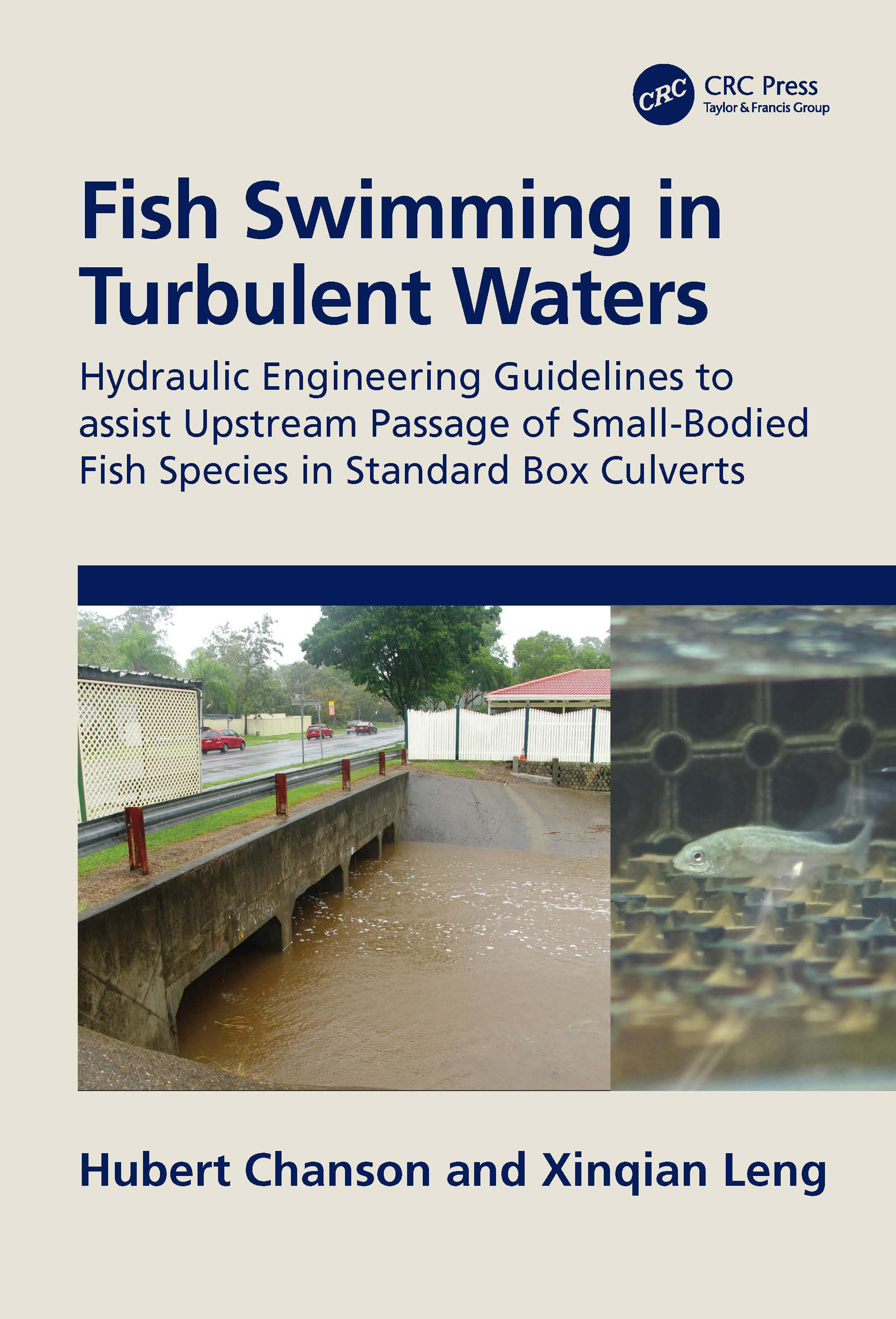

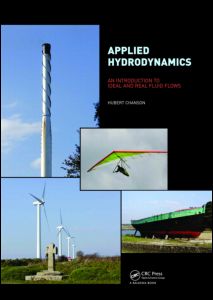
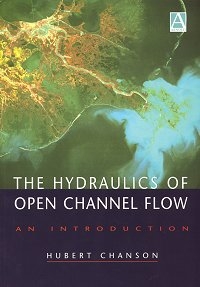
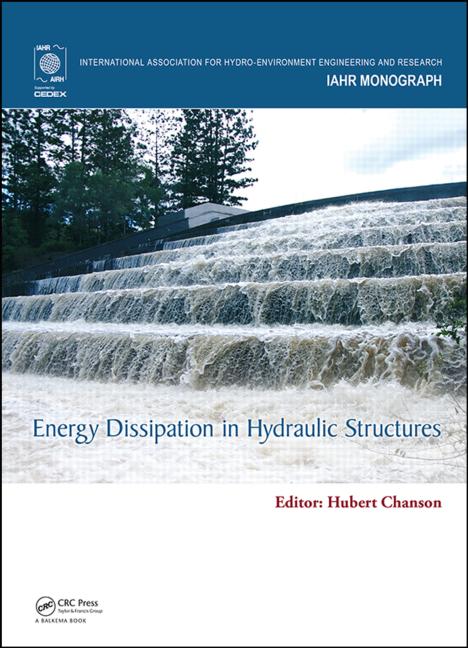

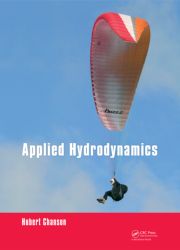
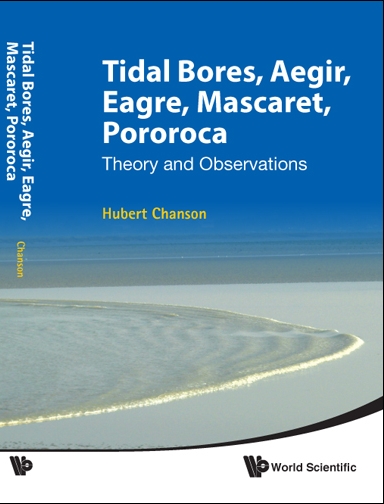
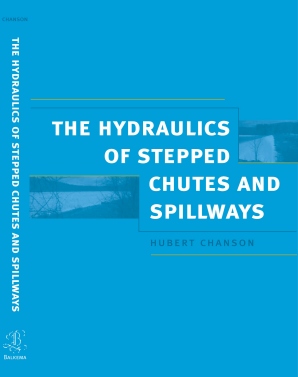

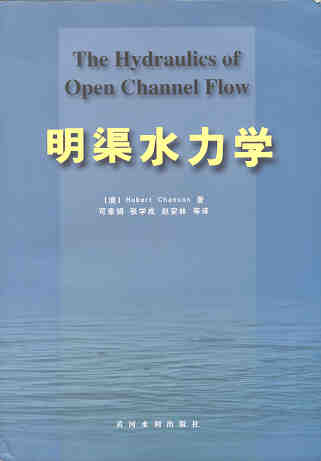
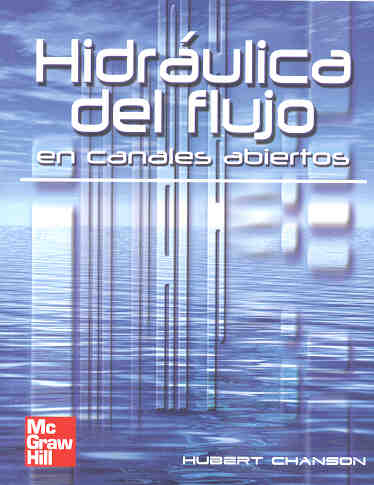

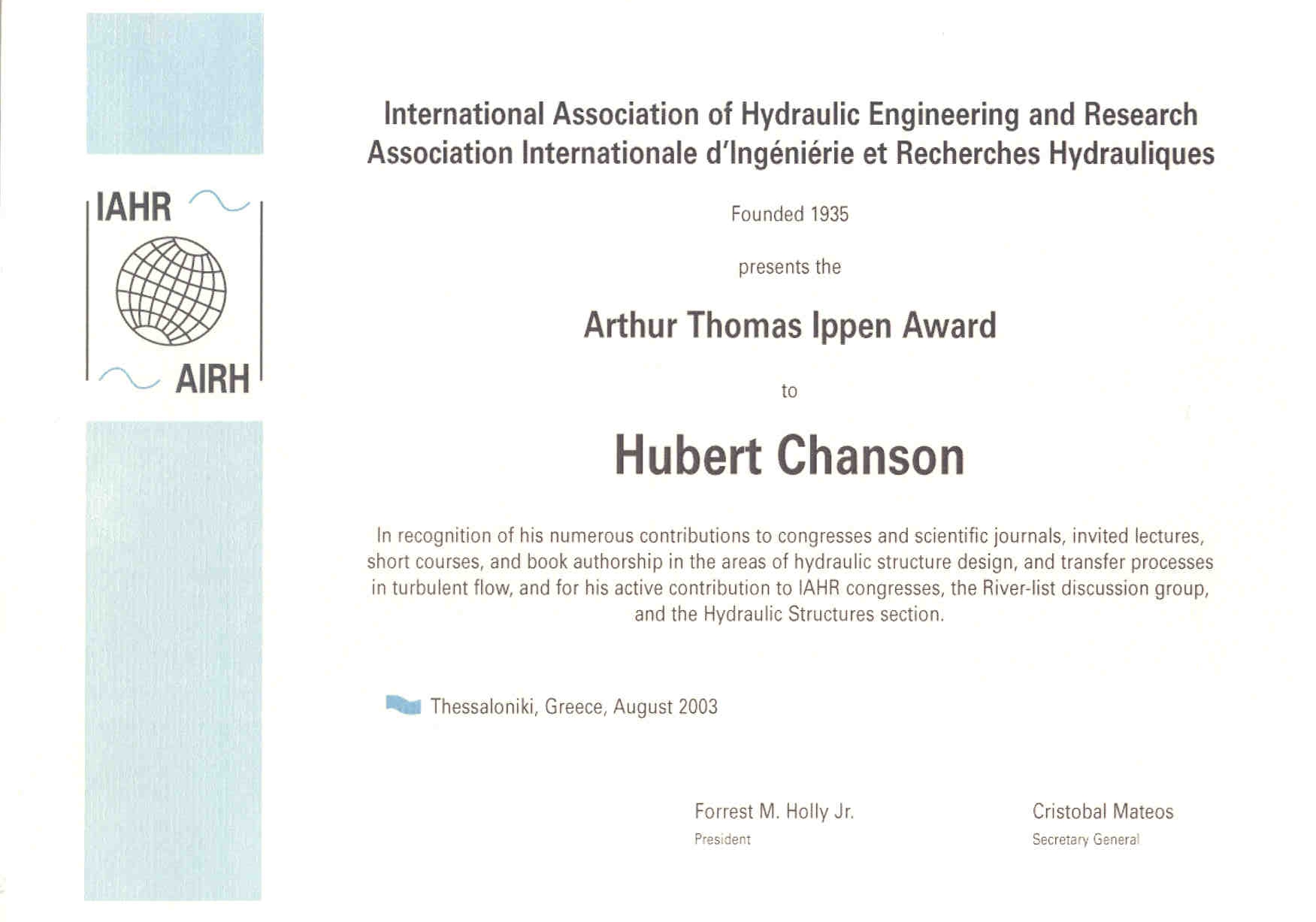
 Presentation
Presentation


 Continuous recordings of water quality parameters,
at 0.5 m beneath the free-surface at one site (AMTD 2.1 km), highlighted
large short term fluctuations with characteristic time scales ranging from
few minutes to half-hour. While some fluctuations were caused by the passage
of boats, others resulted from flow turbulence, possibly from large-scale
turbulent structures. These fluctuations of water quality parameters
demonstrated that the estuarine waters were not uniformly mixed.
Continuous recordings of water quality parameters,
at 0.5 m beneath the free-surface at one site (AMTD 2.1 km), highlighted
large short term fluctuations with characteristic time scales ranging from
few minutes to half-hour. While some fluctuations were caused by the passage
of boats, others resulted from flow turbulence, possibly from large-scale
turbulent structures. These fluctuations of water quality parameters
demonstrated that the estuarine waters were not uniformly mixed.











 Internet resources
Internet resources














